Maintenance Knowledge at Your Fingertips
Print or Download for Offline Access!
The Complete Facility Management Guide
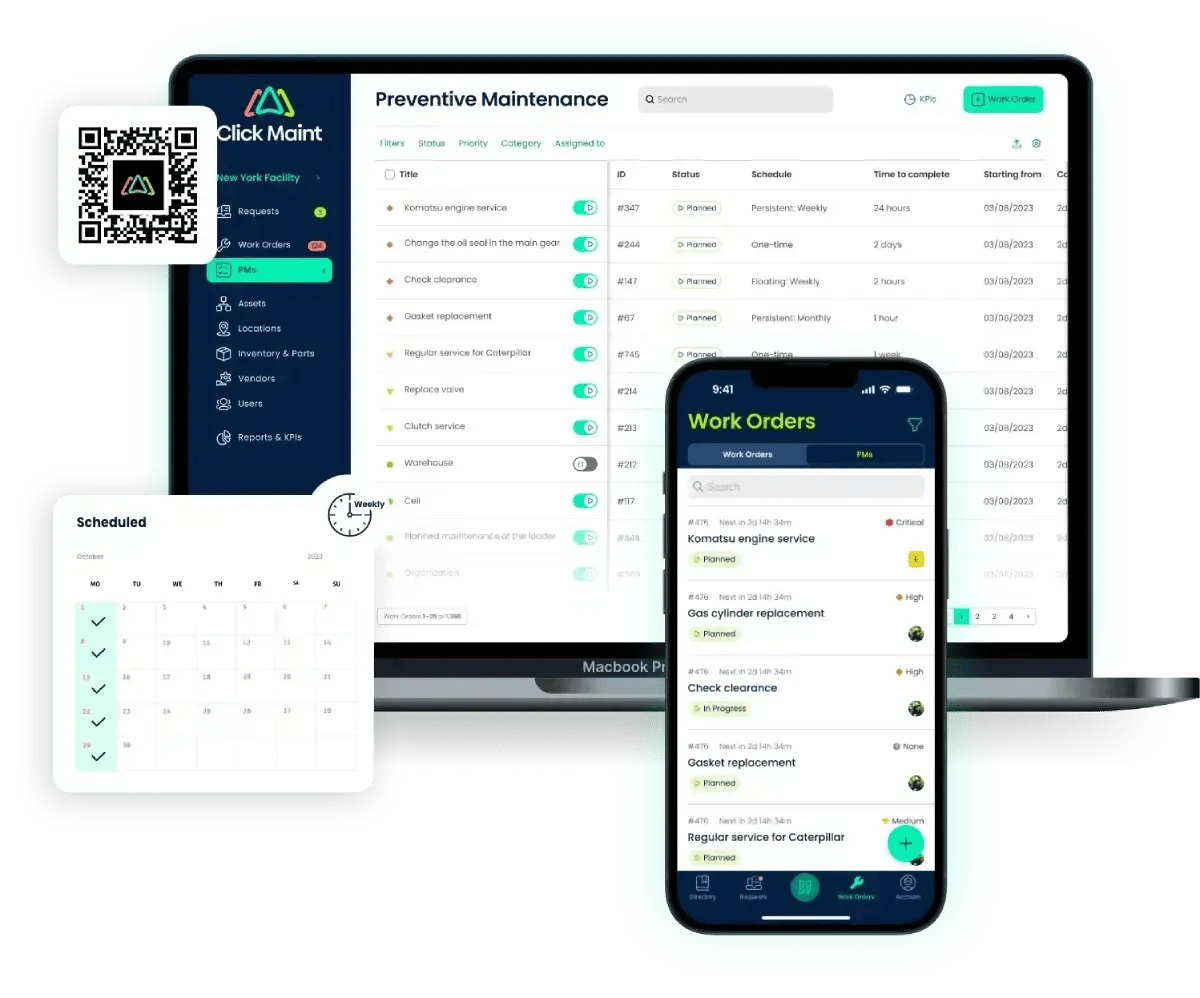
TABLE OF CONTENTS
- Facility Management (FM): Historical Context and Evolution
- Core Responsibilities and Functions of Facilities Management
- Space Management
- Asset Management
- Maintenance and Repairs
- Health and Safety Compliance
- Vendor and Contract Management
- Sustainability Initiatives
- Emergency Preparedness
- Strategic Planning
- Types of Facilities
- Commercial Facilities
- Residential Facilities
- Industrial Facilities
- Healthcare Facilities
- Educational Facilities
- Governmental Facilities
- Strategic Planning for Facility Management
- Setting FM Objectives
- Aligning FM with Organizational Goals
- Facility Maintenance Strategies
- Preventive Maintenance
- Reactive Maintenance
- Predictive Maintenance
- CMMS for Facility Management
- Asset Management and Tracking
- Work Order Management
- Preventive Maintenance
- Reporting and Analytics
- Mobile Accessibility
- Compliance and Documentation
- Integration of CMMS with Other Facility Management Systems
- 1. Building Management Systems (BMS)
- 2. Energy Management Systems (EMS)
- 3. Integrated Workplace Management Systems (IWMS)
- 4. IoT and Sensor Networks
- 5. Document Management Systems
- Sustainable Facility Management Practices
- 1. Circular Economy in Facilities Management
- 2. Renewable Energy
- 3. Green Certifications
- Challenges in Facility Management and How to Overcome Them
- 1. Budget Constraints
- 2. Technological Advancements
- 3. COVID-19 and Its Impact on Facility Management
- Preventing the Flint Water Crisis: A Facility Management Perspective
- 1. Comprehensive Infrastructure Assessment
- 2. Robust Asset Management
- 3. Water Quality Monitoring
- 4. Compliance with Regulations
- 5. Emergency Response Planning
- 6. Community Engagement
- 7. Independent Oversight
- 8. Sustainability and Resilience
What is Facility Management?
Facility Management is a discipline focused on the efficient operation & maintenance of facilities to ensure safety, functionality & comfort of all occupants. It involves a wide range of tasks such as ensuring safety, optimizing space usage, maintaining equipment, and improving the overall functionality of facilities. By integrating people, processes, and technology, Facility Management aims to create an efficient, safe, and comfortable environment that supports the organization’s core activities. This discipline is crucial for enhancing productivity, reducing costs, and ensuring compliance with regulations. For commercial spaces, it includes a wide range of responsibilities, such as maintaining a safe and comfortable working environment, optimizing space usage, overseeing maintenance and repair activities, managing vendors and service contracts, and addressing sustainability concerns.
Well-maintained facilities enhances employee well-being and satisfaction, which, in turn, leads to increased productivity and reduced turnover. Moreover, facility management plays an important role in ensuring compliance with health and safety regulations, environmental standards, and other legal requirements.
FACILITY MANAGEMENT (FM): HISTORICAL CONTEXT AND EVOLUTION
FM's roots can be traced back to ancient civilizations where rudimentary forms of facility upkeep existed, driven by the need for shelter and infrastructure. However, the modern concept of FM emerged in the 20th century, closely tied to the growth of industrialization and the expansion of complex buildings and facilities.
- Industrial Revolution: The onset of the Industrial Revolution in the late 18th century brought about significant changes in the way facilities were managed. The rapid expansion of factories and manufacturing plants necessitated a more structured approach to facility upkeep, giving birth to early FM practices.
- World Wars and Post-War Period: The two World Wars led to advancements in technology and infrastructure, further emphasizing the importance of effective facility management. After World War II, many countries embarked on reconstruction efforts, reinforcing the need for skilled FM professionals to oversee these projects.
- Corporate Growth: The mid-20th century saw a boom in corporate growth and the construction of large office complexes. This marked a pivotal moment for FM as organizations recognized the need for professionals dedicated to maintaining these complex environments.
- Technology Integration: The latter half of the 20th century witnessed a rapid influx of technological advancements. FM evolved from manual, paper-based processes to embrace computerization and, eventually, sophisticated Building Management Systems (BMS) that enable data-driven decision-making.
CORE RESPONSIBILITIES AND FUNCTIONS OF FACILITIES MANAGEMENT
The core responsibilities and functions of facility management are as diverse as the facilities they manage. FM serves as the bridge between the physical environment and an organization's strategic goals. Below are some of the fundamental roles and functions within facility management:
Space Management
Efficiently utilizing space to meet organizational needs is a primary function. This involves space planning, allocation, and optimization to support productivity, collaboration, and growth.
Asset Management
FM professionals oversee an organization's physical assets, from HVAC systems and machinery to furniture and IT infrastructure. They ensure these assets are well-maintained, track their lifecycle, and make informed decisions about replacements or upgrades.
Maintenance and Repairs
Preventive and corrective maintenance are important to ensure facilities operate smoothly. This includes routine inspections, repairs, and planning for major maintenance activities.
Health and Safety Compliance
FM is responsible for maintaining a safe and healthy work environment, ensuring compliance with regulations and standards related to fire safety, occupational health, and environmental sustainability.
Vendor and Contract Management
FM involves managing contracts and relationships with vendors, contractors, and service providers. This includes procurement, negotiation, and performance monitoring.
Sustainability Initiatives
Modern FM places a strong emphasis on sustainability, encompassing energy efficiency, waste reduction, and environmental responsibility.
Emergency Preparedness
FM professionals play a pivotal role in developing and implementing emergency response plans, ensuring facilities are prepared for unforeseen events such as natural disasters or security breaches.
Strategic Planning
Aligning facility management with an organization's strategic goals is a critical function. FM professionals contribute to decisions about facility investments, expansions, or consolidations that support the overall business strategy.
TYPES OF FACILITIES
Each type of facility presents its unique challenges and opportunities for Facility Managers. FM professionals must adapt their strategies, resources, and expertise to meet the specific needs and objectives of the facility type they oversee.
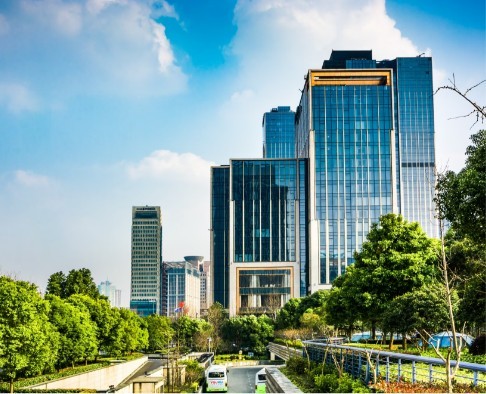
Commercial Facilities
Commercial facilities include office buildings, retail spaces, shopping malls, hotels, and restaurants. These facilities are designed to support businesses and commerce.
- Key FM Considerations: Space optimization, security, customer experience, and sustainability are important in commercial facilities. FM professionals ensure that these spaces are comfortable and conducive for productivity and commerce.
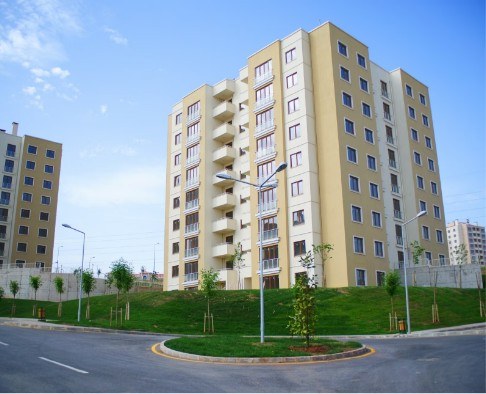
Residential Facilities
Residential facilities encompass a wide range of spaces where people live, such as apartment complexes, condominiums, single-family homes, and retirement communities.
- Key FM Considerations: In residential facilities, FM involves maintaining and enhancing the quality of life for residents. This includes security, landscaping, utilities, and community amenities.
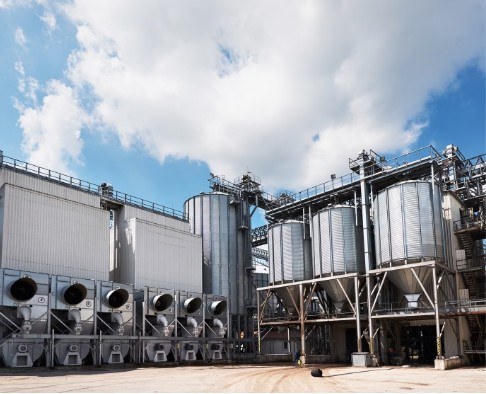
Industrial Facilities
Industrial facilities comprise manufacturing plants, warehouses, distribution centers, and factories. These facilities are focused on production, storage, and logistics.
- Key FM Considerations: Efficiency, safety, equipment maintenance, and compliance with industrial regulations are paramount in industrial facilities. FM professionals ensure smooth operations and minimize downtime.

Healthcare Facilities
Healthcare facilities consist of hospitals, clinics, nursing homes, and medical research centers. They provide medical services and care.
- Key FM Considerations: Healthcare FM is unique due to stringent health and safety standards. FM professionals manage complex medical equipment, ensure sanitation, and maintain patient comfort.

Educational Facilities
Educational facilities encompass schools, colleges, universities, and research institutions. These spaces are dedicated to learning and teaching.
- Key FM Considerations: In educational facilities, FM professionals focus on creating safe, comfortable, and conducive learning environments. This includes classroom maintenance, security, and infrastructure support.

Government Facilities
Government facilities encompass government offices, courthouses, military bases, and public infrastructure such as roads and bridges.
- Key FM Considerations: Government FM often involves managing large and diverse portfolios of properties. FM professionals ensure the functionality and security of government operations and public services can be delivered effectively.
STRATEGIC PLANNING FOR FACILITY MANAGEMENT
Strategic planning involves setting clear objectives for FM activities and aligning these objectives with the broader organizational goals. Effective strategic planning ensures that FM functions as a strategic partner, contributing to an organization's success in achieving its mission. The following are key components of strategic planning in FM:
Setting FM Objectives
The first step in strategic planning is defining specific, measurable, achievable, relevant, and time-bound (SMART) objectives for Facility Management. These objectives serve as the roadmap for FM activities and initiatives.
Key Activities:
- Needs Assessment: Evaluate the current state of facilities and identify areas that require improvement or investment.
- Stakeholder Engagement: Engage with various stakeholders, including senior management, department heads, and facility occupants, to understand their needs and expectations.
- KPI Development: Define Key Performance Indicators (KPIs) that align with FM objectives, such as reducing maintenance costs, improving energy efficiency, or enhancing occupant satisfaction.
- Resource Allocation: Determine the resources (financial, human, and technological) required to achieve the objectives.
Aligning FM with Organizational Goals
Successful strategic planning in FM involves ensuring that FM objectives and activities are closely aligned with the overarching goals and strategies of the organization.
Key Activities:
- Organizational Assessment: Gain a deep understanding of the organization's mission, vision, and strategic priorities.
- Alignment Analysis: Evaluate how FM supports and contributes to the organization's strategic goals. This may involve improving workspace design to enhance employee productivity, implementing sustainability initiatives to align with corporate responsibility objectives, and optimizing facility maintenance to reduce operational costs.
- Collaborative Goal Setting: Work collaboratively with senior management and department heads to establish shared goals that integrate FM into the organization's strategic plans.
- Performance Measurement: Implement ways to measure performance that track the progress of FM activities in relation to organizational goals.
FACILITY MAINTENANCE STRATEGIES
Maintenance ensures that facilities function optimally, remain safe, and deliver a comfortable environment for occupants. Facility maintenance can be categorized into several types, each serving a specific purpose in preserving and enhancing facility performance. The following are a few maintenance management strategies:
Preventive Maintenance
Preventive maintenance is a proactive approach aimed at preventing equipment breakdowns and facility failures before they occur. It involves regular inspections, servicing, and repairs based on predefined schedules or equipment usage.
Key Activities:
- Scheduled Inspections: Conduct routine inspections of equipment, systems, and facilities to identify and address potential issues.
- Routine Servicing: Perform scheduled servicing, cleaning, and lubrication to keep equipment in optimal condition.
- Replacement of Wear Parts: Replace worn or aging components before they fail and cause costly downtime.
Preventive maintenance is cost-effective and minimizes disruptions by addressing problems before they escalate. It extends equipment lifespan and improves overall facility reliability.
Reactive Maintenance
Reactive Maintenance, also referred to as corrective maintenance, involves addressing issues as they emerge. It comes into play in response to equipment failures or facility breakdowns.
Key Actions:
- Emergency Repairs: Mobilize maintenance teams swiftly to respond to unforeseen equipment failures or breakdowns.
- Fault Diagnosis: Diagnose the root causes of failures to better understand, predict and help prevent recurring issues.
- Documentation: Maintain records of reactive maintenance activities to be analyzed and improved on.
While reactive maintenance is essential for addressing unforeseen problems, it is generally more costly and can result in downtime and productivity loss. It can be used to complement preventive and predictive maintenance strategies.
Predictive Maintenance
Predictive Maintenance utilizes data and advanced technology to forecast equipment failures and plan maintenance activities just in time.
Key Actions:
- Data Collection: Gather and analyze data from sensors, performance records, and equipment to identify patterns and anomalies.
- Condition Monitoring: Continuously monitor equipment and system conditions in real-time to detect early signs of deterioration.
- Predictive Analytics: Employ predictive algorithms to predict when maintenance is necessary, optimizing scheduling and resource allocation.
Predictive Maintenance minimizes downtime, reduces maintenance costs, and extends equipment life by addressing issues when they are most likely to occur. Read this article to learn more about the advantages and disadvantages of each maintenance strategy and when these strategies are best used.
CMMS FOR FACILITY MANAGEMENT
Computerized Maintenance Management Systems (CMMS) has emerged as an indispensable tool for effective Facility Management (FM). CMMS software streamlines maintenance processes, optimizes asset management, and enhances overall facility performance. Here's an in-depth look at how CMMS benefits FM:
Asset Management and Tracking
- Asset Database: CMMS software is a comprehensive database of all facility assets, including everything from HVAC systems to office furniture. Each asset is assigned a unique identifier and detailed information, including maintenance history, manufacturer, location, supplier, life expectancy, install date and warranty information.
- Preventive Maintenance Scheduling: FM professionals can schedule routine maintenance tasks, such as equipment inspections and filter changes, within the CMMS. The system generates work orders and assigns them to maintenance technicians or vendors to be serviced.
- Inventory Control: CMMS enables precise inventory tracking of spare parts and supplies needed for maintenance. This prevents overstocking or understocking, reducing costs associated with rush orders, theft, and depreciation.

Work Order Management
- Efficient Work Order Generation: Facility managers can create work orders in the CMMS for various maintenance tasks. Work orders can be prioritized, categorized, and assigned to specific maintenance teams, technicians or vendors.
- Real-time Updates: CMMS allows real-time tracking of work order progress. Technicians can update work order statuses, report completed tasks, and record notes or issues encountered on-site, ensuring transparency and accountability. Time and materials used are also recorded for reporting purposes.
- Historical Records: The CMMS stores a comprehensive history of work orders, facilitating analysis and decision-making. Facility managers can identify recurring issues, track costs, and optimize maintenance schedules based on historical data.
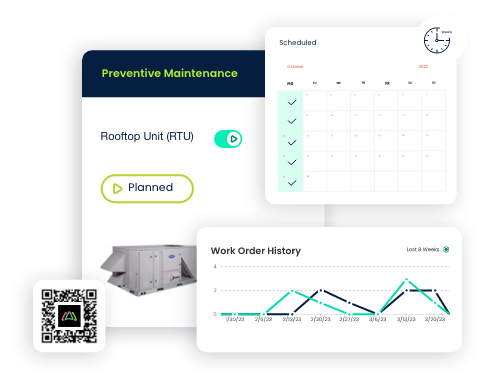
Preventive Maintenance
- Scheduled Maintenance: CMMS software enables the creation of preventive maintenance schedules for critical equipment and systems. Regular inspections and servicing are automatically scheduled to minimize downtime and reduce the risk of unexpected failures.
- Condition-based Maintenance: Some CMMS systems support condition-based maintenance, where sensors and IoT devices provide real-time data on equipment performance. This data triggers maintenance tasks only when necessary, optimizing resource allocation.
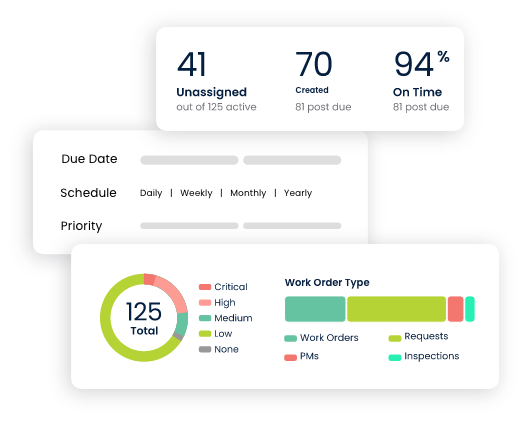
4. Reporting and Analytics
- Customizable Reports: FM professionals can generate customizable reports within the CMMS, providing insights into asset performance, maintenance costs, compliance with safety regulations, and more.
- Data-driven Decision-making: By analyzing CMMS-generated data, facility managers can make informed decisions about equipment replacements, energy-saving initiatives, and long-term maintenance strategies.
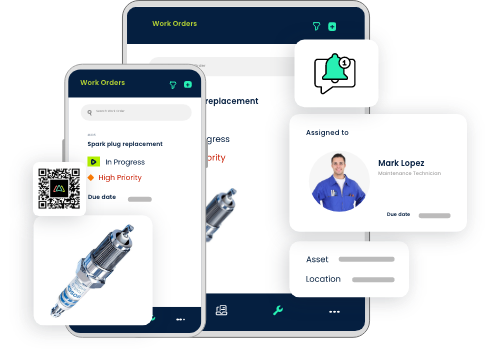
5. Mobile Accessibility
- Mobile Apps: Today’s CMMS solutions almost always offer mobile apps that allow technicians to access work orders, asset information, and maintenance checklists on smartphones or tablets while in the field. This enhances communication and efficiency.
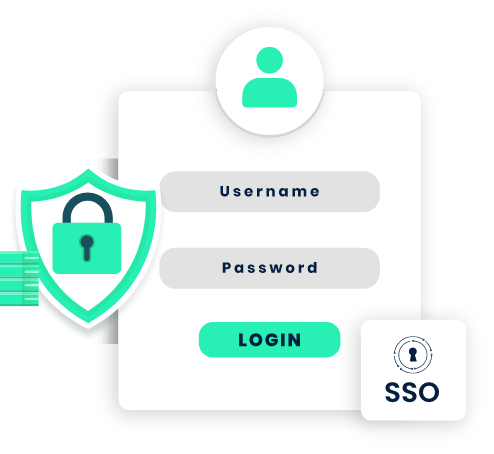
6. Compliance and Documentation
- Regulatory Compliance: CMMS helps maintain compliance with industry regulations and safety standards by tracking inspections, certifications, and documentation related to facility equipment and systems.
- Document Management: Facility managers can upload and store essential documents, manuals, drawings and floor plans, and maintenance records within the CMMS, ensuring easy access for audits and inspections.
INTEGRATION OF CMMS WITH OTHER FACILITY MANAGEMENT SYSTEMS
CMMS integration with other FM systems, such as Building Management Systems (BMS) and Energy Management Systems (EMS), helps ensure that facility management data syncs and is consistent. Systems integration makes it possible for department heads and other employees to easily access information and reduce time to generate reports.
1. Building Management Systems (BMS)
Integration Purpose: BMS monitors and controls building equipment and systems like HVAC, lighting, and security. Integration with CMMS allows seamless coordination between maintenance activities and BMS data.
Benefits:
- Real-time Data: CMMS can access data from BMS in real-time, allowing for predictive maintenance based on equipment performance.
- Efficient Work Orders: When BMS detects a malfunction or inefficiency, it can trigger a maintenance work order directly in the CMMS, ensuring swift resolution.
- Energy Efficiency: The integration helps optimize energy consumption by aligning maintenance activities with BMS data on HVAC and lighting system performance.
2. Energy Management Systems (EMS)
Integration Purpose: EMS tracks energy usage and identifies areas for improvement. Integrating with CMMS enables a comprehensive approach to energy-efficient facility management.
Benefits
- Data Correlation: Combining EMS data with CMMS allows for a holistic view of facility performance, identifying energy-saving opportunities during maintenance.
- Scheduled Maintenance: CMMS can schedule maintenance during off-peak hours to reduce energy consumption.
- Performance Metrics: Energy data can be used to evaluate the impact of maintenance on energy efficiency, helping in decision-making for future maintenance strategies.
3. Integrated Workplace Management Systems (IWMS)
Integration Purpose: IWMS encompasses various FM functions, including real estate management, space planning, and maintenance. Integration with CMMS ensures cohesive management across all FM domains.
Benefits:
- Streamlined Operations: Data sharing between CMMS and IWMS enhances collaboration among different FM teams, streamlining processes and reducing duplication of efforts.
- Space Management: Through an IWMS / CMMS integration, data on space allocations and utilization patterns can be shared, enabling better planning for maintenance activities.
- Resource Optimization: By combining data, FM professionals can optimize resource allocation, including space, personnel, and maintenance budgets.
4. IoT and Sensor Networks
Integration Purpose: IoT sensors collect real-time data on equipment and facility conditions. Integrating IoT with CMMS facilitates condition-based maintenance and predictive analytics.
Benefits:
- Predictive Maintenance (PdM): IoT data can trigger maintenance alerts in CMMS when equipment performance deviates from normal, allowing for timely repairs or replacements.
- Data Analytics: CMMS can analyze IoT data to identify trends and patterns, helping to optimize maintenance schedules and improve asset performance.
5. Document Management Systems
Integration Purpose: Document Management Systems store critical documents, manuals, and maintenance records. Integrating with CMMS ensures easy access to documentation during maintenance activities.
Benefits:
- Efficient Record-keeping: CMMS can link directly to relevant documents stored in the document management system, enhancing documentation organization and retrieval.
- Audit and Compliance: Access to documentation aids in regulatory compliance and audits, as maintenance records are readily available for inspection.
SUSTAINABLE FACILITY MANAGEMENT PRACTICES
Adopting sustainable practices not only reduces environmental impact but also contributes to cost savings, regulatory compliance, and improved occupant well-being. The following are three key sustainable practices in FM:
1. Circular Economy in Facilities Management
The circular economy in FM is an approach that aims to minimize waste and resource consumption by extending the lifespan of products and materials. Instead of following a linear "take-make-dispose" model, FM professionals strive to keep resources and products in use for as long as possible through strategies like refurbishment, recycling, and reusing.
Key Initiatives:
- Asset Reuse: Rather than discarding furniture or equipment, FM professionals explore opportunities for refurbishment or repurposing.
- Materials Recycling: Recycling programs are implemented for materials like paper, plastic, glass, and electronic waste.
- Energy Efficiency: Optimizing energy use and adopting energy-efficient technologies contributes to resource conservation.
Benefits: Embracing the circular economy reduces waste, lowers procurement costs, and aligns FM with sustainability goals, fostering a more responsible approach to resource management.
2. Renewable Energy
Incorporating renewable energy sources, such as solar panels, wind turbines, or geothermal systems, into facility operations is a hallmark of sustainable FM. Renewable energy not only reduces the carbon footprint but also offers long-term cost savings.
Key Actions:
- Solar Power: Installing solar panels on facility rooftops or grounds to generate clean, renewable electricity.
- Wind Energy: In regions with suitable wind conditions, wind turbines can be used to harness wind energy.
- Geothermal Heating and Cooling: Geothermal systems utilize the earth's natural temperature to regulate indoor climate.
Benefits: Renewable energy integration lowers greenhouse gas emissions, reduces reliance on fossil fuels, and often leads to long-term cost savings on energy bills. It aligns facilities with sustainability objectives and positions organizations as responsible environmental stewards.
3. Green Certifications
Green certifications, such as LEED (Leadership in Energy and Environmental Design), BREEAM (Building Research Establishment Environmental Assessment Method), or ENERGY STAR, provide recognized standards for sustainable building and FM practices. Pursuing these certifications demonstrates a commitment to environmental responsibility.
Key Considerations:
- LEED Certification: LEED focuses on sustainability in building design, construction, and operation, considering factors like energy efficiency, water conservation, and indoor air quality.
- BREEAM Certification: BREEAM assesses the environmental performance of buildings across categories like energy, transport, materials, and waste.
- ENERGY STAR Certification: ENERGY STAR focuses on energy efficiency, providing a benchmark for comparing energy performance across buildings.
Benefits: Green certifications enhance a facility's marketability, increase energy efficiency, improve indoor air quality, and often lead to cost savings. They also demonstrate a commitment to sustainability to stakeholders, including employees, clients, and the community.
CHALLENGES IN FACILITY MANAGEMENT AND HOW TO OVERCOME THEM
1. Budget Constraints
Challenge: Budget constraints are an constant challenge in FM. Facilities require ongoing maintenance, upgrades, and improvements, and limited budgets can hinder the ability to meet these needs.
Overcoming the Challenge:
- Prioritization: Develop a comprehensive asset management plan to prioritize maintenance and upgrades based on criticality and long-term cost-effectiveness.
- Life Cycle Cost Analysis: Consider the total cost of ownership when making decisions about facility investments, factoring in maintenance, energy efficiency, and sustainability benefits.
- Alternative Funding Sources: Explore financing options like public-private partnerships, grants, and energy performance contracts to fund facility improvements.
2. Technological Advancements
Challenge: Keeping up with rapid technological advancements, including smart building systems and data analytics is a big challenge for many FM professionals.
Overcoming the Challenge:
- Continuous Learning: Invest in ongoing training and professional development to stay updated on the latest technologies and best practices in FM.
- Strategic Integration: Develop a technology integration strategy that aligns with the organization's goals and priorities, ensuring that technology investments deliver value.
- Collaboration: Encourage and promote collaboration between IT departments and FM teams to ensure seamless integration and effective utilization of technology.
3. COVID-19 and Its Impact on Facility Management
Challenge: The COVID-19 pandemic introduced unprecedented challenges for facility management professionals, including the need for enhanced cleaning protocols, social distancing measures, supporting remote work, and reimagining their approach to office space occupancy.
Overcoming the Challenge:
- Pandemic Preparedness: Develop and implement pandemic preparedness plans that include flexible workplace strategies, enhanced cleaning and disinfection procedures, and crisis communication protocols.
- Remote Work Support: Adapt facilities to support remote work, ensuring that IT infrastructure, security, and space planning considerations are in place.
- Technology Integration: Invest in technology solutions like touchless access control, occupancy monitoring, and air quality sensors to address pandemic-related concerns and support a safe workplace.
Preventing the Flint Water Crisis: A Facility Management Perspective
The Flint water crisis was a tragic failure on multiple levels. While it primarily involved water supply and distribution, applying facility management best practices and strategies could have helped circumvent the crisis. The following are facility management actions that could have prevented the Flint water crisis:
1. Comprehensive Infrastructure Assessment
Facility managers should have conducted regular assessments of the water distribution infrastructure, including pipelines and treatment plants. This would have identified deteriorating lead pipes and the need for maintenance and replacement.
Recognizing the aging infrastructure, facility managers should have initiated pipeline replacement projects well in advance of identifying issues.
2. Robust Asset Management
Implementing a Computerized Maintenance Management System (CMMS) could have facilitated proactive asset management. CMMS enables tracking of asset condition and schedules preventive maintenance, which could have included lead pipe replacement or corrosion control measures.
3. Water Quality Monitoring
Facility managers must establish rigorous water quality monitoring programs. Regular testing for lead and other contaminants would have detected issues early. A data-driven approach, facilitated by CMMS and water quality monitoring systems, would have allowed facility managers to make informed decisions regarding water treatment and distribution.
4. Compliance with Regulations
Facility managers should ensure that water treatment facilities comply with all regulations and standards, including corrosion control requirements. Compliance should be routinely audited.
Documentation and reporting systems should be in place to provide evidence of compliance and transparency to regulators and the public.
5. Emergency Response Planning
Facility managers should develop comprehensive emergency response plans for scenarios like water quality crises. This should include procedures for sourcing safe drinking water and communication protocols. Regular training for facility staff and emergency response teams is important to ensure a swift and effective response.
6. Community Engagement
Facility managers should actively engage with the community, responding to concerns and conducting outreach about water quality. This would have provided an early warning system through resident complaints. Transparency in facility management, including sharing information about infrastructure improvements and water quality, builds trust with the public.
7. Independent Oversight
Independent oversight of water treatment facilities and maintenance, separate from the facility management team, can help identify issues and ensure adherence to safety standards.
8. Sustainability and Resilience
Facility managers should incorporate sustainability and resilience principles into their operations. This includes planning for long-term infrastructure sustainability and climate change impacts.
The lessons learned from this tragedy underscore the critical role that facility managers play in safeguarding public health and the environment through responsible and proactive facility management practices.

